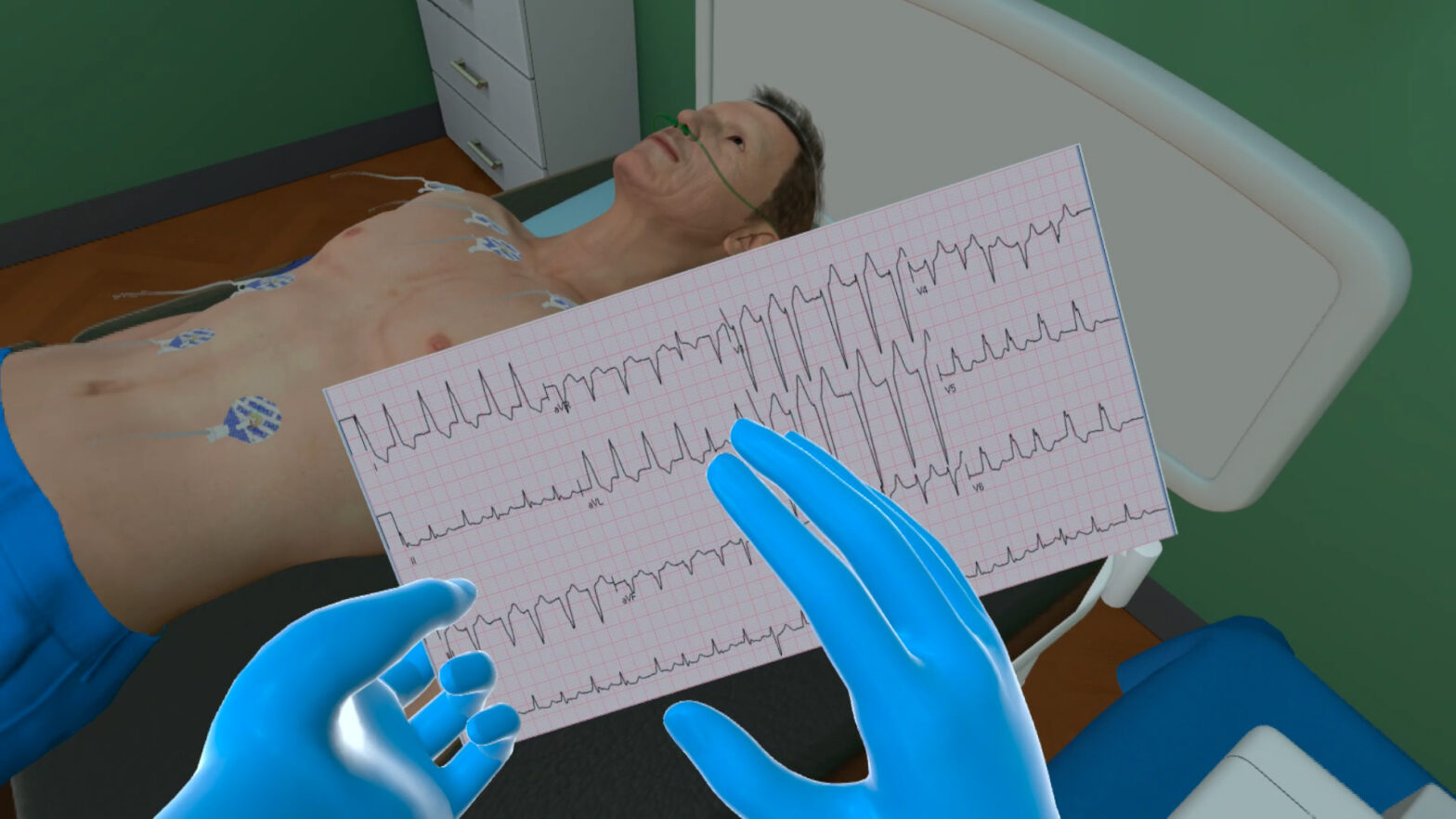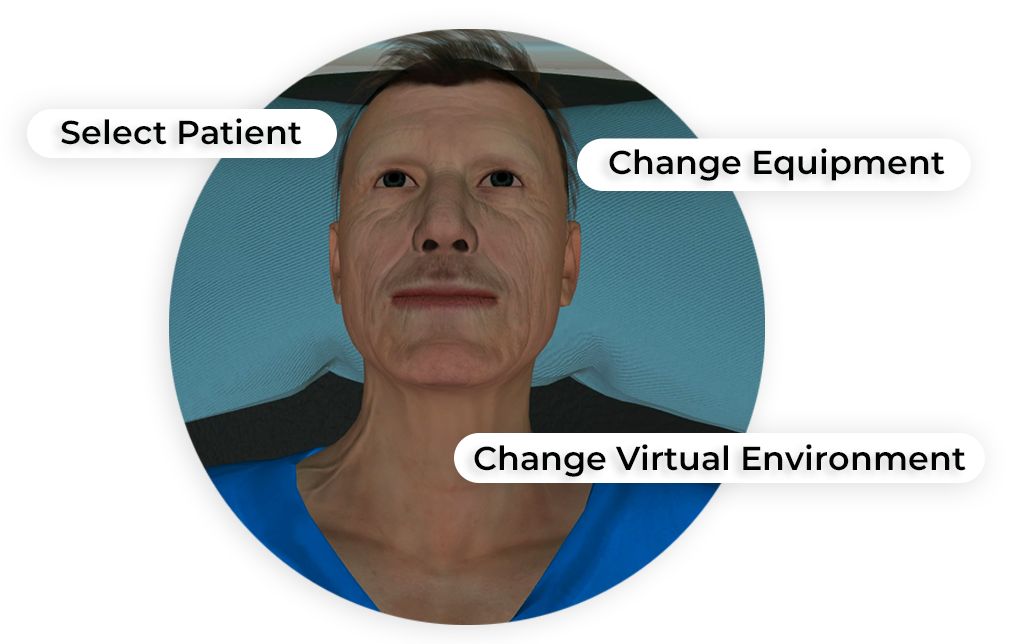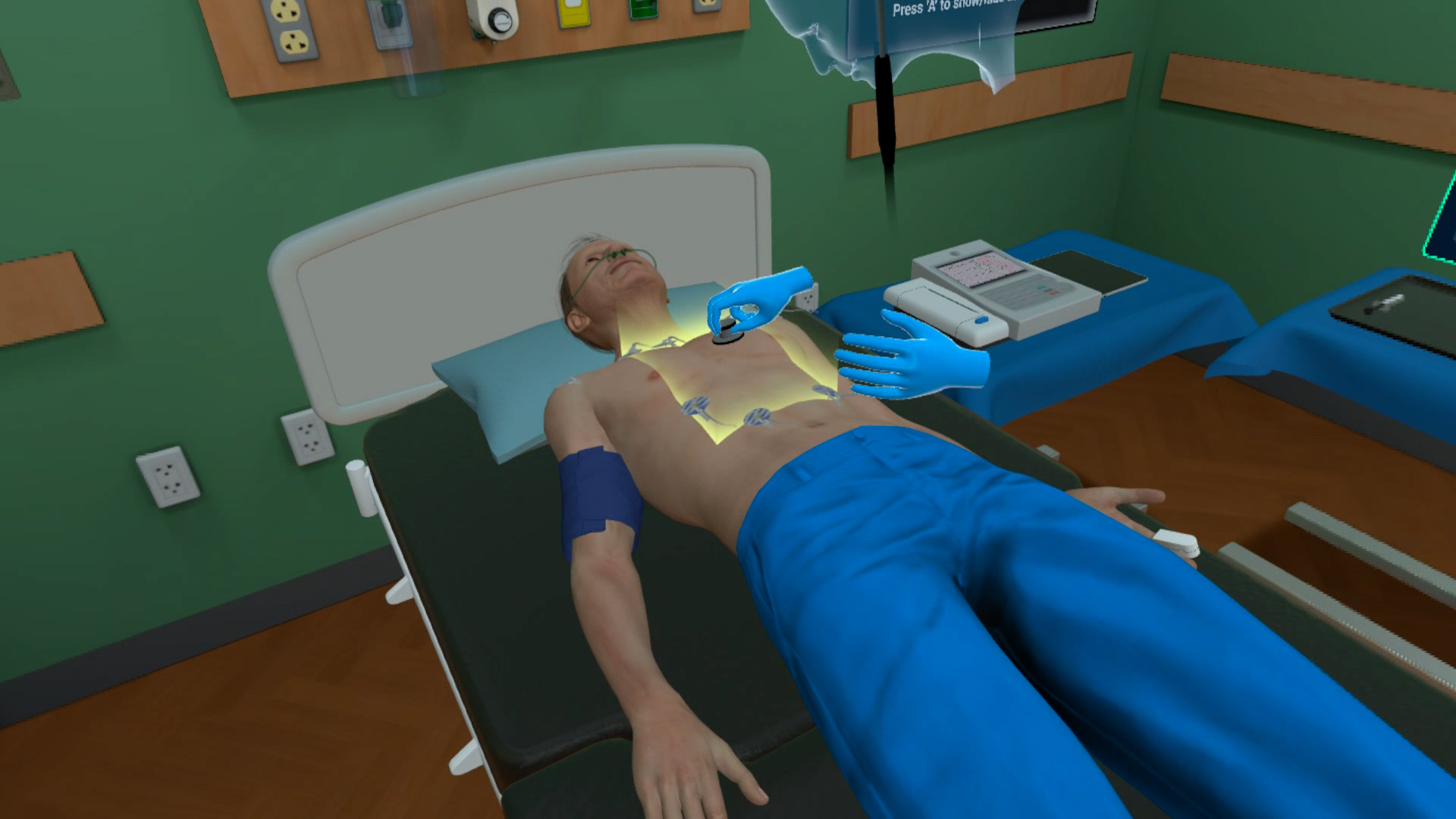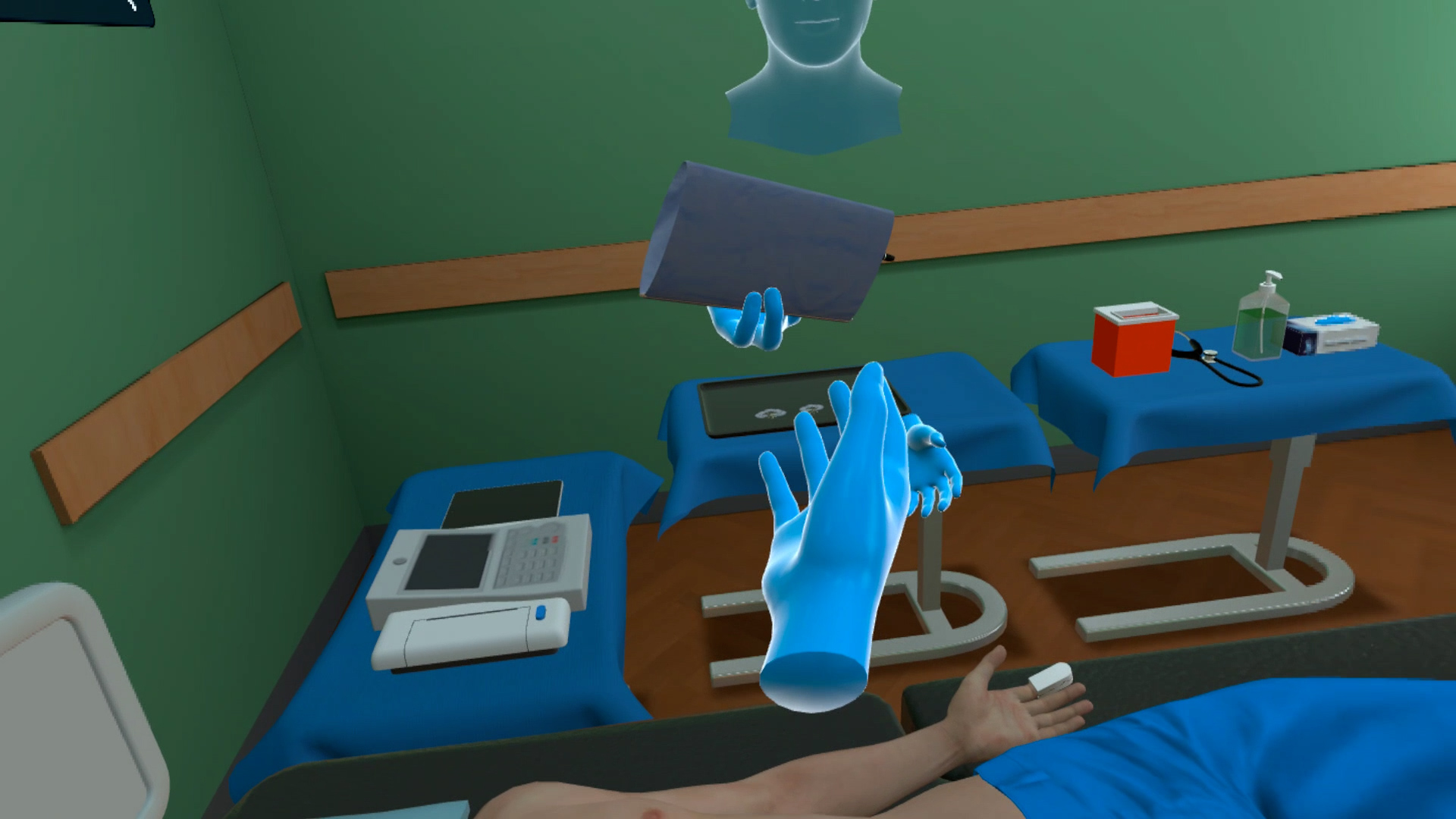Cardiogenic Shock
Steve Carell, 56-year-old male, with ischemic cardiomyopathy and CAD, presents with dyspnea and mild hypoxemia. He is found to be hypervolemic with AFib RVR and is initially treated with IV furosemide and metoprolol, improving his rate control. Shortly after admission, he develops lethargy and tachycardia, with exam and lab findings concerning for cardiogenic shock. He requires vasoactive support and ICU transfer.
This open scenario VR simulation is designed to provide practice in identifying, assessing and managing a case of cardiogenic shock.
- Creating a differential diagnosis for acute-onset hypotension
- Employing physical exam cues on volume status and perfusion to refine a differential for hypotension
- Recognizing risk factors, exam findings, and laboratory abnormalities consistent with cardiogenic shock
- Escalating care for a patient with cardiogenic shock
- Choosing an appropriate initial vasoactive agent to combat hypotension in patients with suspected cardiogenic shock

- Bronicki, R. A., Tume, S. C., Flores, S., Loomba, R. S., Borges, N. M., Penny, D. J., & Burkhoff, D. (2023). The cardiovascular system in cardiogenic shock: Insight from a cardiovascular simulator.
Customize Your Program
Get rid of the editor. Adopt in-VR customization.
MedVR Education is bringing to you in-VR customization that will enable you to customize your procedural simulations by making selections from a range of feature choices.
- Select patient from a diverse background
- Choose preferred virtual environment
- Configure patient vitals
- Define simulation duration
- Create patient history and train with AI-Humans
- Customize session-end debriefing
- …..many more to come

 Multi-playerSessions
Multi-playerSessions Physics-based Interactions
Physics-based Interactions
Core Skills Training

Managing Cardiogenic Shock
As part of this multiplayer open scenario, the learner finds the patient tired with no appetite and with a condition of dyspnea. Having checked the patient’s vitals, the learner will proceed to administer medication to relieve dyspnea but with the patient showing signs of acute shortness of breath and a dipping heart rate the learner will identify a case of cardiogenic shock, escalate the case to call for an RT and prepare for transfer to ICU. This scenario is set in a photorealistic environment, and all necessary affordances are made available to assist learners in performing their tasks with efficiency and effectiveness.
Debriefing
End-of-task debriefing to assess one’s performance, evaluate actions, and get the most out of the training. Examples of topics being touched upon in the debriefing include the following:
- Thorough patient assessment
- Completion of necessary steps
- Correct medication administration to patient
- Sequential completion of task
- Execution of time-sensitive tasks






